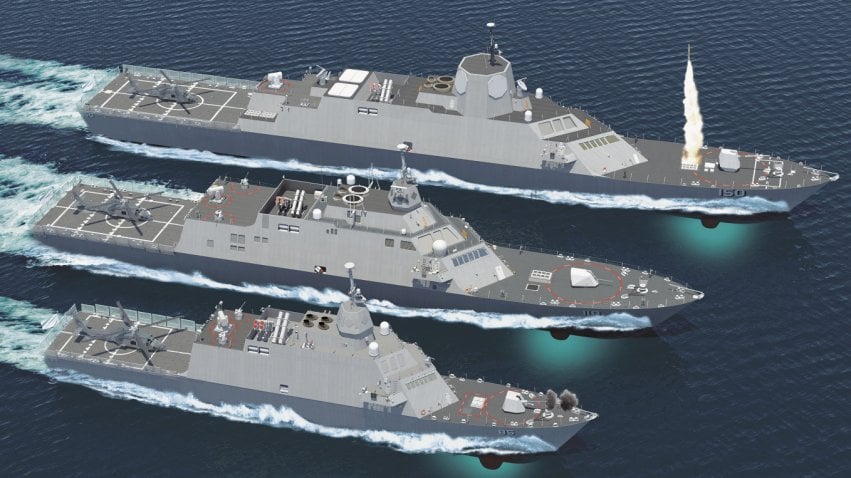
Saudi Arabia is leaning toward buying a variant of the Lockheed Martin Littoral Combat Ship as a key component of a long-awaited multi-billion dollar refresh of its Eastern Fleet in a deal that could close as early as year’s end, according to press reports confirmed by USNI News.
Reports in Reuters and Defense News indicate the Saudis could buy two to four variants of Lockheed’s Freedom-class LCS as part of the Saudi Naval Expansion Program II — a program to modernize the kingdom’s oldest warships operating in the Persian Gulf.
The Saudis reportedly issued a letter of request (LoR) to the U.S. detailing the requirements of the program and to reach an agreement with Lockheed and the Navy by the end of November, reported Defense News.
“After that, it’s up to the Saudis to agree to the U.S. Foreign Military Sales program and sign,” read the report.
USNI News understands the end-of-the-year agreement maybe overly optimistic to reach an agreement the four ships the Saudi Navy wants by November and that the FMS process could take additional time.
A U.S. State Department official told USNI News on Tuesday the department doesn’t comment on pending FMS cases until Congress is notified.
Lockheed Martin “has been monitoring the government to government talks for several years and we remain hopeful that the navies can reach an agreement on the program,” read a Tuesday statement provided to USNI News from the company.
“We stand ready to support the U.S Navy and the Royal Saudi Naval Forces with the required capabilities once they are finalized.”
Saudi has eyed the U.S. ships for years as part of an estimated $20 billion program that will modernize its aging fleet of American-built ships that populate the kingdom’s Eastern Fleet.
The four LCS variants will likely serve as the primary combatant for the fleet in addition to six other corvettes for which the Saudi Navy has issued LoRs.
In the past the Saudis have inquired about platforms as large as the Arleigh Burke-class guided missile destroyers (DDG-51) complete with the Aegis Combat System, AN/SPY-1D air search radar and the ability to field Raytheon Standard Missiles 2 (SM-2).
Instead of the larger 9,000-ton Burkes, the U.S. has steered the Saudis to less-tonnage LCS variants capable of fielding SM-2s and smaller versions of the SPY-1.
“What kind of requirement do they really need given all the other things that they have and have aspirations for and their ability to man the ship and fight the ship?” Dale P. Bennett, executive vice president of Lockheed Martin’s Mission Systems and Training (MST), told USNI News in February.
“The requirements have been moving around, [It’s been] let’s go to a DDG-51 for awhile, [then] let’s go back to an LCS.”
While an expanded Freedom variant can field SM-2s, according to Lockheed, USNI News understands the Saudi version will field Raytheon Evolved SeaSparrow Missile (ESSM) as its primary air defense weapon. Defense News reported the Saudi variant would use “an enhanced version of the Airbus Group TRS-3D radar fitted on U.S. Navy Freedom-class LCSs and U.S. Coast Guard Legend-class national security cutters.”
All told, SNEP II is set to comprise of 10 warships and additional infrastructure improvements at the naval base in Jubail on the Persian Gulf.
“This massive purchase could include destroyers, patrol craft, helicopters, ground vehicles and other platforms, as well as warehouses and substantial upgrades to port infrastructure,” read an October U.S. Army Corps of Engineers briefing.
In August, the State Department notified Congress of a potential $1.9 billion sale of 10 Sikorsky MH-60R helicopters to the kingdom, thought to be a component of SNEP II.





